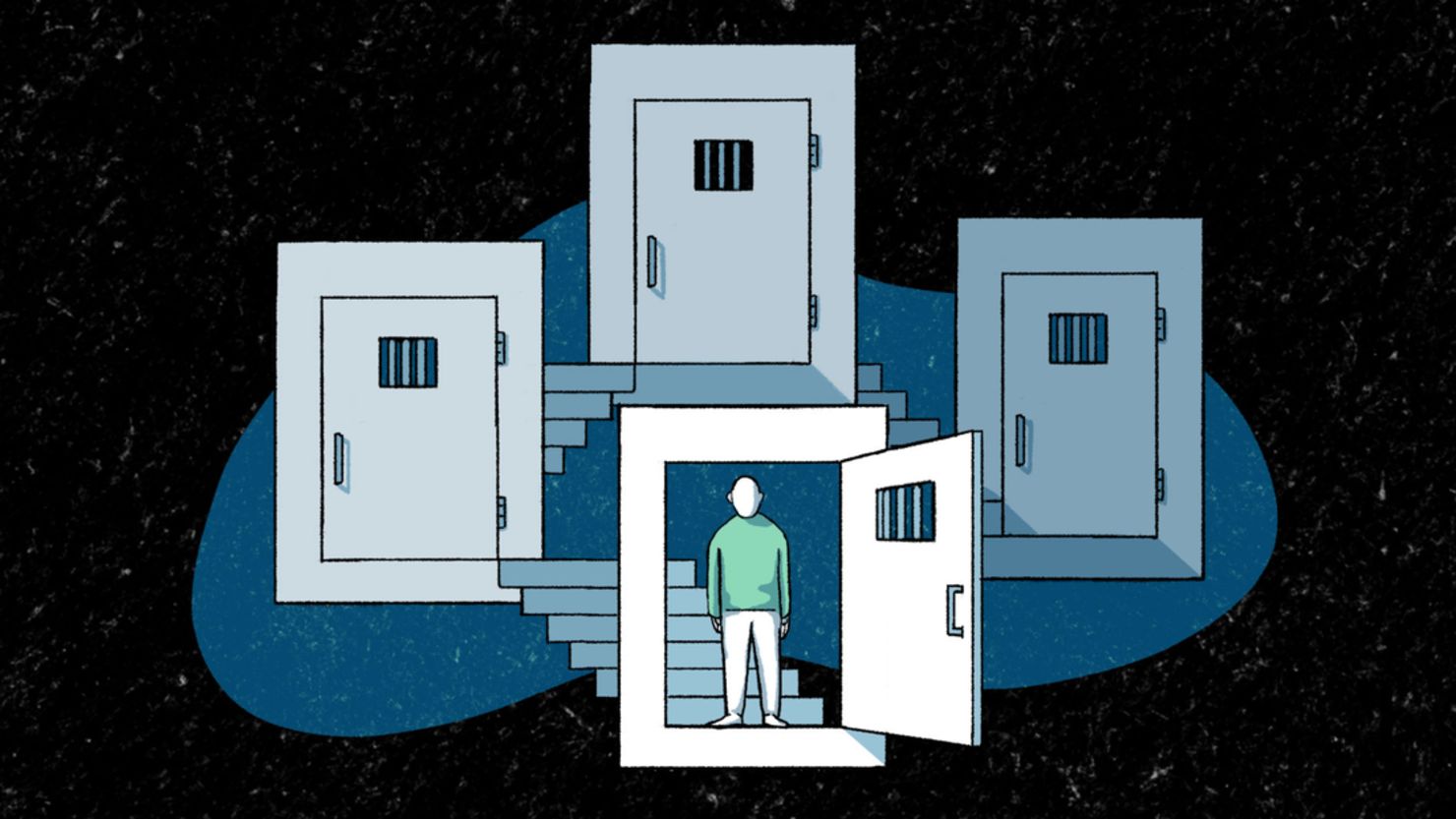In late August of 2021, Minneapolis police responded to a shooting along I-94, where they found a BMW sedan that had crashed into a freeway median. Slumped behind the steering wheel was 38-year-old Luis Damian Martinez Ortiz, who’d suffered a fatal gunshot wound to the chest.
After reviewing surveillance footage, police arrested George Howard, then 47, who’d gotten into an alleged road-rage altercation with Ortiz on a freeway onramp, according to court documents. Howard, whose trial is slated for April, stands accused of second-degree murder; his attorney says he was acting in self-defense.
Days after his arrest,?local crime bloggers and rightwing media pounced on a discovery. Three weeks prior to the shooting, Howard – who had a lengthy rap?sheet and a history of violence – had been bailed?out of jail while awaiting trial on a misdemeanor domestic-assault charge.
The woman he allegedly assaulted had secretly called 911 during that incident and was heard by a dispatcher saying, “I don’t want to die,” according to a case report obtained by CNN.
The party that put up the $1,500 in cash to release Howard is a progressive organization called the Minnesota Freedom Fund.?
“Ya picked another winner, MFF, bravo,”?tweeted?CrimeWatchMpls, a widely followed local crime blog – and a frequent critic of the nonprofit – above the court document it had dug up and mugshot of Howard. “Thanks so much.”
The Minnesota Freedom Fund is among more than 100 charitable bail groups in the United States. Together, they represent a segment of the bail ecosystem that mostly flew under the public’s radar until the May 2020 police murder of George Floyd in Minneapolis.?
?Most raise money through crowdsourcing or other methods of fundraising and post bail for low-income defendants as part of a larger effort to abolish the cash-bail system, which many of the nonprofits view as a predator of the poor – and in particular of Black, brown and Indigenous communities.? ?
Floyd’s death left many Americans eager to do their part to counter inequities in the criminal justice system. Celebrities such as Justin Timberlake, Seth Rogen and Vice President Kamala Harris?touted?the Minnesota Freedom Fund and other bail charities on Twitter. Donations poured in. Many charities experienced a surge, but none as jarring as the one that jolted the Minnesota Freedom Fund. In all of?2019, it raised about $231,000; in 2020, the charity took in a whopping?$41.6 million. The deluge of donations was so huge it crashed the organization’s PayPal account.?
“It was getting kind of scary,”?Mirella Ceja-Orozco, co-executive director of the Minnesota Freedom Fund, told CNN. “None of us had ever seen this kind of money.”??
The Minnesota Freedom Fund wasn’t the only charity to experience an influx of cash in 2020. The Los Angeles-based Bail Project – which operates in nearly two dozen cities nationwide – saw its annual contributions that fiscal year nearly triple to about $42 million. The Chicago Community Bond Fund’s annual revenues skyrocketed from about $1 million to nearly $8 million by the end of 2020. In the Seattle area, the Northwest Community Bail Fund’s annual take-in blew up from a mere $158,000 to about $5.7 million.
?Almost overnight, charitable bail groups had become hefty contributors to a fast-snowballing movement to reform the cash-bail system. The momentum kept building after Floyd’s death, with Joe Biden’s presidential campaign calling for the end of cash bail and Illinois Gov. J.B. Pritzker signing a landmark bill making his state the first in the nation to completely abolish it. (The bill was poised to go into effect in January, but was put on hold on New Year’s Eve due to a flurry of litigation.)
At the height of the unrest over Floyd’s death – with demonstrators getting arrested by the hundreds in major cities – many bail charities advertised themselves as a mechanism by which to release protesters held in jail.?
But since then, in no small part because they’ve had such a windfall at their disposal, some bail charities have started taking on more hardcore cases.?The nonprofit groups argue that their work is no different from that of commercial bail bondsmen.
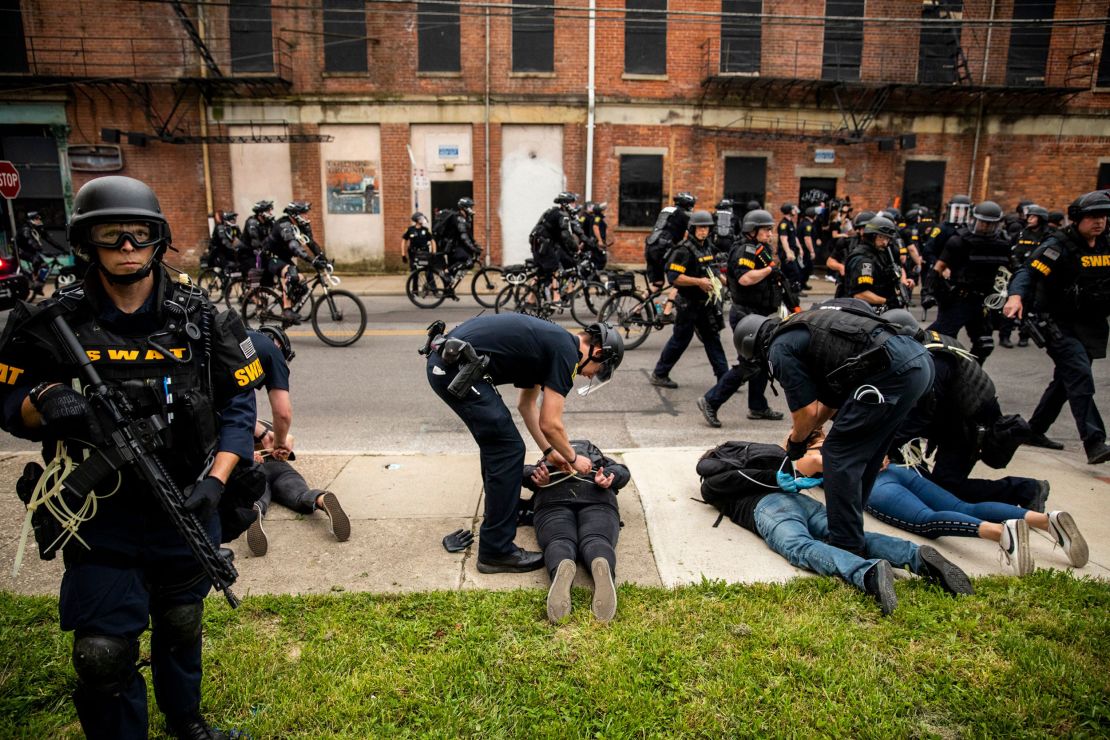
Still, not all states treat them as equal. New York, for instance, bars charitable bail groups – and not their licensed commercial counterparts – from bailing out defendants accused of felonies.
In Minneapolis’s Hennepin County, which along with the rest of the state is served by the Minnesota Freedom Fund, CNN discovered at least 65 defendants who were bailed out by the charity after Floyd’s killing while awaiting trial on felony charges involving violence, physical threats or sex crimes. All were convicted.
According to court documents, they included a woman who fatally stabbed a man for refusing to have sex with her; a convicted felon who shot a man twice in the abdomen in a strip-mall parking lot (the victim survived); a man with a history of violent felony convictions who assaulted a woman with a butcher knife and beer bottle, leaving her with a broken jaw and collarbone; and a man with five prior felonies who stomped on the head of a tourist, causing what paramedics said was a broken jaw, profuse bleeding and a possible concussion.
In Indiana, over the three years ending in December of 2021,?24% of the roughly 1,000 defendants cut loose by The Bail Project – among the largest charitable bail groups in the United States – had been charged with a crime of violence; 35% were facing felony charges and had a previous charge of at least one crime of violence, according to figures shared by the organization in a lawsuit.
CNN also found dozens of cases across the country after Floyd’s death in which defendants bailed out by charities were later arrested again for alleged acts of violent crime, including?robbery, assault, kidnapping and attempted murder. In?at least nine cases, a beneficiary of a bail charity has, after their release from jail, been subsequently arrested on murder charges. ?
Seizing on rising crime rates in the months after Floyd’s death, Republicans?in Minnesota,?Kentucky,?Pennsylvania,?Washington state and?Indiana?took aim at bail charities with bills seeking to quash or hamper their ability to operate.?
The Indiana bill was consequential: It became law in July.?The new statute, among other things, prohibits bail charities – but not commercial bail-bond companies or private citizens – from bailing out defendants accused of crimes of violence or who are charged with a felony and have a violent crime conviction on their record.
The leaders of The Bail Project – which stopped posting bail in Indiana after the new law took effect – say they feel singled out and the organization has teamed with the ACLU in filing a federal lawsuit against?the state.?A judge denied The Bail Project’s request for a preliminary injunction, but a final ruling is pending. ?
The state of Indiana’s response to the suit sums up the primary complaints of bail-charity critics: In this post-George Floyd era, the nonprofit groups have thrown themselves into the gears of the American criminal justice system like a wrench, undermining structural incentives for getting defendants to show up for court while occasionally releasing dangerous criminals back into the streets – all with minimal transparency and oversight.
A CNN review found that the new Indiana law – if applied nationally – likely would have prohibited charities from releasing at least five of the nine defendants who were later arrested on murder charges.
But sometimes, the circumstances surrounding allegations of serious crimes can be murky. That was the case for Trey Dozier of Chicago, who says that were it not for The Bail Project coming to his rescue during his darkest hour, his life would be ruined.
The ‘scary exception’
?Dozier, now 36, lost his job as a claims manager for a moving company?and with it his health insurance in 2020, forcing him to ration his insulin. As he and The Bail Project tell the story, one day in August of that year, Dozier fell into a diabetic coma and went missing due to “diabetic dementia.” While wandering about in a daze, Dozier allegedly opened the passenger door of an occupied car and demanded the occupants get out; they called the police.?He was arrested and charged with felony carjacking. ?
A judge set Dozier’s bail at $100,000; to get out he would need to pay a $10,000 deposit. Dozier and his partner not only lacked the money, they were way behind on rent.?
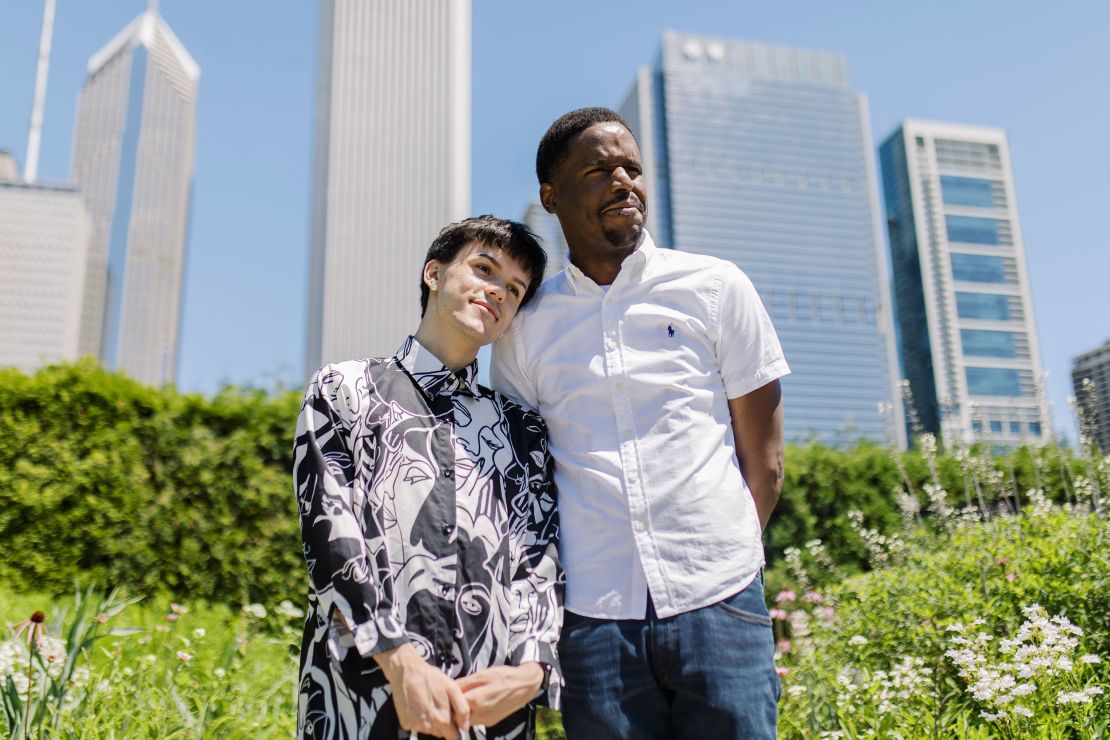
?“I was working at Target at the time, so I was really going to work every day and coming home and thinking, ‘Is this the day when all of our stuff is going to be on the street?’” Dozier’s partner, Christin Tauriainen, told CNN.
Tauriainen shared Dozier’s plight on TikTok; employees at The Bail Project saw it and the organization agreed to cover Dozier’s bail. He was released in late 2020 after having been in jail for three months. His next court hearing is on April 3. ??
“If it were not for The Bail Project, the things that they did, I cannot – I really, truly can’t tell you,” Dozier told CNN, adding that he now has a better job than the one he lost. “It was us falling without a parachute, and somebody showing up basically right on time.”?
Bail charity operators say it is stories like Dozier’s – rather than the more sensational ones about defendants who commit grave crimes after their release – that typify their clientele.?
“We see articles all the time about the exception – the scary exception,” said Robin Steinberg, the founder and CEO of The Bail Project. “What you never see are stories that talk about the millions of people, literally, that come out of jail every year in the pretrial context and go back to their families, continue to thrive, fight their cases from a position of freedom, feed their children, do their jobs, finish their cases, and move on with their lives. That’s never a headline.”
Nationwide, some 70% of the 636,000 inmates in local jails have not been convicted of the crime for which they are accused, according to a recent Bureau of Justice Statistics report, citing data from 2021. That means most people in jail are there awaiting trial because they can’t afford cash bail, say advocates of bail reform. Black people make up roughly 35% of all jail inmates, which is more than twice their share of the general population.
Bail charity advocates note that wealthy defendants who are granted bail can almost always enjoy freedom until their trial (think?Harvey Weinstein?or murderer Robert Durst, who paid $250,000 and then skipped his court hearing) while indigent ones stuck behind bars are often pressured to plead guilty just to get out of jail. The Minnesota Freedom Fund says about a third?of the defendants it bails out ultimately have their cases entirely dropped.?
A double standard?
Charitable bail groups feel unfairly under siege, and often?point out that judges – not charities – determine whether a defendant is eligible for bail and then how much it should be.
In theory, judges are prohibited by the US Constitution from setting bail that is excessive. In practice, there are judges who purposefully assign steep bail amounts as a way of keeping people in jail, said Joceyln Simonson, a professor and associate dean at Brooklyn Law School. Simonson said bail charities act as a corrective for that and other flaws in the criminal justice system.
“I think the story of community bail funds is one about groups of people getting together to bail out strangers,” she said. “It’s kind of a mind-blowing thing to be doing based on some broader idea that money bail is not just.”
In what is often renounced by bail charities as a double standard, their critics tend to give a pass to commercial bail-bond companies, which do not shy away from de-jailing people accused of violence – some of whom later get arrested again in connection with heinous crimes.
“Bail reform and charitable bail funds are an easy scapegoat,” Camilo Ramirez, the chief strategy officer at The Bail Project, told CNN. “All this focus on organizations that help low-income people for free … versus an industry that profits $2 billion a year from the two-tier system of justice that bail creates.”

Kellen Funk, an associate professor of law at Columbia Law School, said he believes it’s “mostly right” that bail charities are often unfairly singled out, noting that they and commercial bail-bond companies serve many of the same basic functions.
And yet, he said, bail-bondsmen often seek defendants facing the most serious charges.
“That’s the whole point, right?” Funk said. “That’s where they make the most money.”
Bail charities have a natural enemy in the for-profit bail industry, whose business model is undercut by the crowd-funded organizations.
Jeffrey Clayton, the executive director of the American Bail Coalition, a trade association of insurance companies who underwrite criminal bail bondsman in the United States, has worked on bills that attempt to rein in bail charities all over the country. He believes bail charities should be confined to certain kinds of offenses.
“They should stick to, you know, cases where typically we see problems with indigent parties getting ensnared in the system,” he said. “And that’s those low-level misdemeanor cases.”
It’s easy to understand why the bail industry views charitable bail groups as a threat. Most are unapologetic about their ultimate aim: to dismantle the cash-bail system in its entirety. The Minnesota Freedom Fund even launched a new political offshoot dedicated to that cause.
The National Bail Fund Network, a collaborative partnership including about 60 pre-trial bail charities across the country, takes it even further, listing as one of its main tenets the abolition of the “prison industrial complex.”
This kind of bold positioning not only sets the stage for confrontation with the bail industry, it has recently proven vulnerable to attack from the political right amid fears over high rates of violent crime nationwide. However, even though efforts to roll back bail reforms are under way in several states, experts say clear evidence linking bail reform to crime increases is lacking.
Among GOP lawmakers who have taken guidance from the American Bail Coalition is Peggy Mayfield, the state representative who authored the successful Indiana bill, which puts charitable bail groups under state oversight.
Mayfield says the cash-bail system is fundamentally different from what bail charities do.
“A bail agent can go get the defendant and haul him back to jail,” Mayfield said. “You know it commonly as a bounty hunter. Charitable bail has no authority to make that person go to court.”
What’s more, cash-bail supporters say, baked into the system is an incentive for getting defendants to show up for court. Cash bail advocates often refer to this as having “skin in the game” or collateral.
Simply put, freedom for the defendant is “purchased,” usually by paying for a nonrefundable portion of their bail – typically 10% – to a commercial bail-bond company. If the defendant fails to show up, they or their family are on the hook for the rest. (People can also pay bail in full themselves; the money is returned if and when the defendant shows up for court.)
Because bail charities amount to a benevolent stranger – or a crowdsourced collective of benevolent strangers – who covers the full bail for defendants with no strings attached, the argument goes, they subvert the incentive.
“If you run, so what?” said Joe Tamburino, a defense attorney in Minneapolis and a supporter of the cash-bail system. “It’s not your money or your mom’s money being lost.”
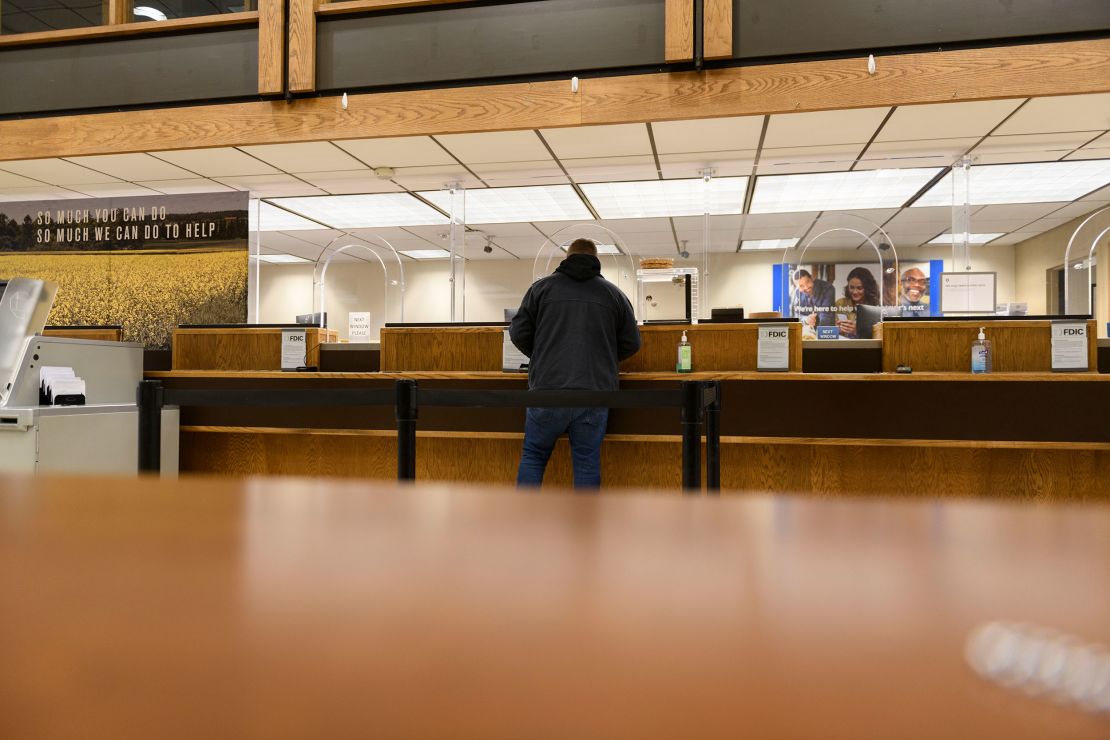
Charitable bail groups do have an incentive as an organization to ensure their clients show up for the court hearings: When that happens, the nonprofit organizations are typically reimbursed by the courts for the bail they paid. (For this reason, they often refer to their pot of revenue as a “revolving fund.”)
If there is general agreement on one thing, it’s that the entire purpose of bail is to incentivize defendants to show up for court, not detain people who are, constitutionally speaking, innocent until proven guilty.
Skin in the game
Still, a key question remains: Will defendants actually be less inclined to appear in court if their bail is covered by a philanthropic group???
To address it, CNN focused on three bail charities – The Bail Project, the Minnesota Freedom Fund and the Northwest Community Bail Fund in Seattle – because all grew substantially after Floyd’s death and all have come under fire for having bailed out people who were later arrested again on suspicion of murder.
The Bail Project, which was founded in 2017, often cites its evidence-based approach to bail-reform advocacy.
By the charity’s count, its nearly 29,000 clients have made more than 90% of their court hearings. Steinberg, the CEO, says that that high rate alone is reason enough to abolish cash bail.
“There’s some intuitive sense to the idea that putting skin in the game makes people come back to court,” Steinberg told CNN. “But it turns out that that was a myth, and that in some ways, the entire cash bail system was built upon a myth.”?? ??
The Bail Project declined to share its raw data with CNN, citing an internal policy against releasing information about its clients.
But a recent study commissioned by Los Angeles County compiled statistics showing that The Bail Project’s failure-to-appear rate – at 21% – was notably below that of the larger population of defendants released before their trial in Los Angeles County; about a third of them missed court. The Bail Project’s re-arrest rates were also markedly lower.
Leaders at The Bail Project attribute their apparent success in getting clients to show up for court and stay out of trouble in part to vetting them through preliminary interviews, and also to the nonprofit’s additional support services beyond paying bail.?

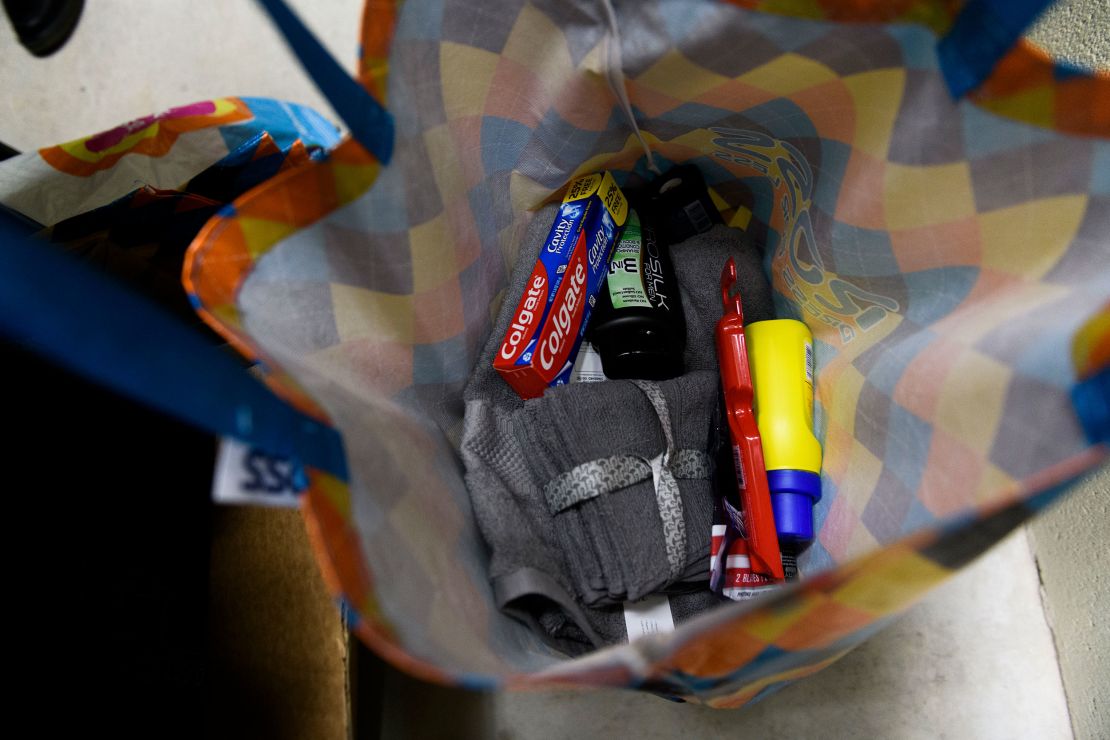
These include reminders for upcoming court appearances and free transportation to hearings, as well as referrals to mental health providers and career counseling.
Still, CNN’s review of the Minnesota Freedom Fund and the Northwest Community Bail Fund challenges Steinberg’s contention that cash-bail proponents’ skin-in-the-game argument is bogus.
In Minnesota, CNN analyzed every case in the state in which a defendant was?bailed out of jail by a third party – including either the Minnesota Freedom Fund or a commercial bail-bond company – in 2021 and 2022 and was convicted of at least one charge. (Detailed case histories of people who weren’t convicted are not available remotely or as bulk data in Minnesota.)
About 42% of the roughly 500 defendants bailed out by the Minnesota Freedom Fund later failed to appear at one or more court hearings. The corresponding figure for the 16,000 defendants released on commercial bail: 22.5%.?The Minnesota Freedom Fund says its failure-to-appear rate for all its clients – including those who weren’t convicted – fluctuated in 2021 between 18%-24%; comparable data for commercial bail bondsmen isn’t available.
In the Seattle area, the Northwest Community Bail Fund has facilitated about 440 bailouts since summer of 2020; those defendants failed to appear in court 52% of the time, according to data provided to CNN by the King County Prosecuting Attorney’s Office in early January. The corresponding figure for the 3,000-plus occasions in which defendants were bailed out in more traditional ways was 24%.?
If the results shed light on an under-reported aspect of bail, they should also be read with caution. Funk of Columbia Law School said that the populations might be quite different: People helped by the charities are more likely than people released on commercial bond to be too poor to pay for their bail.
“The charitable bail funds, just by the nature of the enterprise, are going to be helping the riskier people,” he said.
In Washington state, the risk isn’t confined to higher failure-to-appear rates. Since summer of 2021, at least four defendants bailed out by the Northwest Community Bail Fund were later arrested again on allegations of murder.?
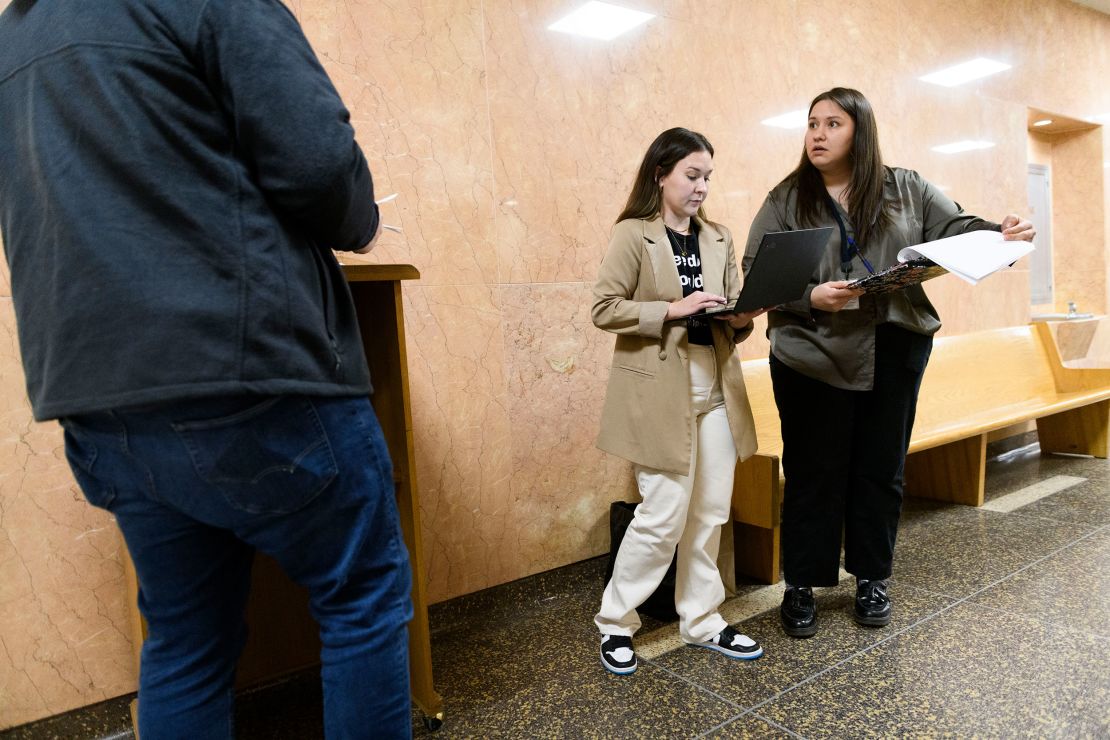
‘They just turned a monster free on the street’
The story of one egregious case in Seattle began in spring of 2021, when a 240-pound homeless man was arrested on suspicion of pummeling a 65-year-old amateur photographer and stealing his camera in a Seattle city park, according to court records. The victim had loss of vision in one eye.
The prosecuting attorney’s office asked the judge to set the bail high for Michael Sendejo, arguing that Sendejo posed?a danger.??
“The State is concerned about the safety of the community if the defendant is released from custody,” wrote a deputy prosecutor, noting that, when the photographer returned to the park to ask Sendejo for his camera back, Sendejo assaulted him again with a piece of wood, “leaving bruising on the victim’s legs.”
The judge said that while she was concerned about Sendejo’s lack of cooperation with the responding police officers, she sided mostly with the defense and set bail at $5,000 – a quarter of the prosecutor’s request – based on what was understood at the time to be Sendejo’s lack of a serious criminal history.
The Northwest Community Bail Fund stepped forward to pay it, and Sendejo was set free.??
Weeks later, in June of 2021, Sendejo was arrested on suspicion of murder in the same park. The victim, 31-year-old Bradley Arabie, instigated the fight, court records say, but was dwarfed by Sendejo’s size. Autopsies showed Arabie had been strangled and stabbed at least eight times.???
“He begged for his life,” Sendejo told an investigating officer, according to court records. “I was not interested.”??
Last October, Sendejo, 51, was?convicted?of second-degree murder.??
Angela Arabie, Bradley’s mother, is furious that the judge set bail so low over the prosecutor’s objections, and that the bail charity paid for the release of a man who was “a danger to Seattle.”
“They just turned a monster free on the street, and they didn’t even know he was a monster,” she told CNN.??
The Northwest Community Bail Fund said in a response to CNN that decisions about fulfilling a request for bail assistance are “made on an individual basis and by team consensus, with a focus on reducing harm.
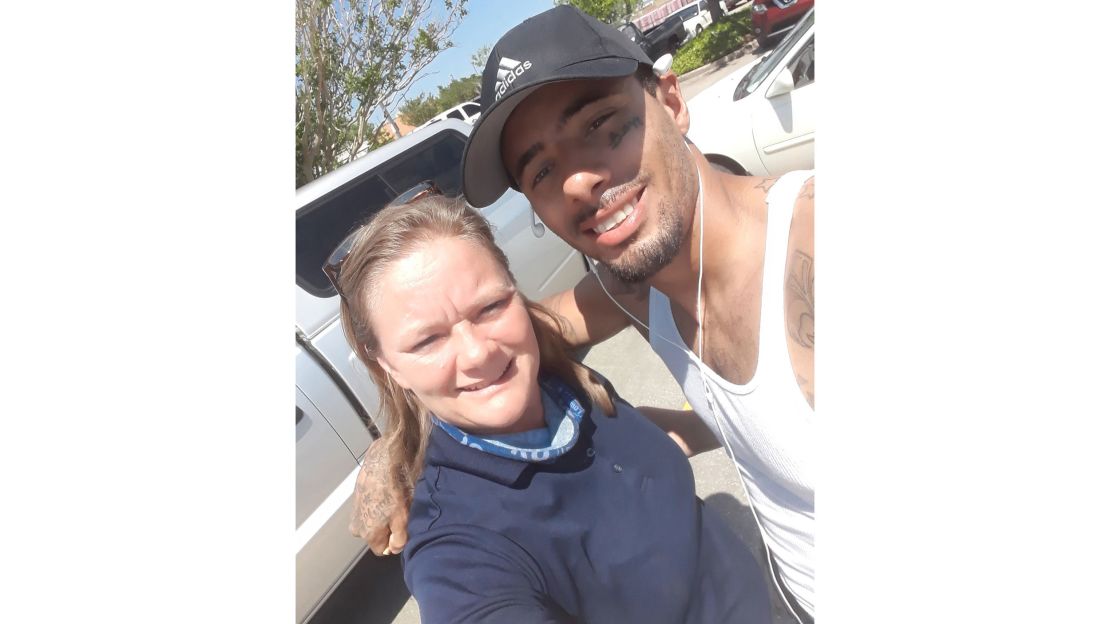
“Factors that may play a part in our decisions include but are not limited to ability to afford bail amount, health factors, pregnancy, impending loss of job, housing or shelter bed, race, gender status, separation of families.”?
CNN’s review of the roughly 60 bail charities in the National Bail Fund Network found their stated criteria for deciding whom to bail out varies, with many listing factors similar to the ones mentioned in the Northwest Community Bail Fund’s statement.
Some limit their clientele to defendants accused of nonviolent offenses. Such is the case for the Luke 4:18 Bail Fund in Fort Worth, Texas, which as a matter of policy does not provide bail for people accused of murder, charges of an aggravated or sexual nature or human trafficking. Others take more of an absolutist approach: The Richmond Community Bail Fund in Virginia says on its website that it bails out whomever it can “regardless of the charge or criminal history.” Some favor not only the abolition of bail, but of prisons and the police.
The state of Indiana criticized The Bail Project for lacking transparency about its criteria for choosing whom to release.
“The organization’s staff decides who is eligible based on its own ‘highly individualized’ process, but it has not shared any specific criteria,” a deputy attorney general wrote in the state’s response to The Bail Project’s lawsuit.
The Bail Project’s leaders told CNN they typically interview potential clients in jail before agreeing to take on their case; the organization helps about 60% of its applicants. Although The Bail Project takes into consideration a defendant’s bail amount and track record of showing up for court, it does not typically weigh criminal history or the severity of charges – the organization says those factors are for judges to consider when making bail-setting decisions.
That approach has backfired.

A case in point is Marcus Garvin, an Indiana man who was awaiting trial on allegations that he’d stabbed a customer in the back with a six-inch blade at a gas station where Garvin worked the register in late December 2020. A probable cause affidavit obtained by CNN said Garvin, now 33, was annoyed that the customer was taking too long in the restroom and attacked him as they walked outside the building. Immediately after the incident, a video captured Garvin tossing the kitchen knife on the cashier counter and saying, “Damn that was satisfying” before he resumed checking out other customers, according to the court document.
Over the objections of the prosecutor, a judge in January of 2021 initially reduced bail from $30,000 to $15,000, citing Garvin’s limited criminal history. Then, responding to the defense attorney’s request to bring it down further to $1,500 “so we could ask for The Bail Project involvement,” the judge obliged. The charity covered it and Garvin was released with a GPS monitoring device.
That summer, in a motel room at the Always Inn where Garvin was living with his girlfriend, 30-year-old Christie Holt, Garvin woke up Holt and confronted her about text messages she was sending to another man, according to an affidavit.
Furious that they were poking fun at him behind his back for his failures in life, Garvin confessed to police that he stabbed Holt in the neck during the argument and kept attacking her with the knife as she fought for her life, according to the affidavit. Jury trials for both of Garvin’s cases – the gas-station stabbing and the murder – are currently scheduled for May.
The charity also bailed out a man in custody for a felony burglary charge who was arrested eight months later on suspicion of luring two police officers into a street and ambushing them, stabbing one in the neck and the other in the chest. Both survived.
These and other cases caught the attention of the local media. Intensifying the drama was the discovery that the bail charity had received city taxpayer dollars – $150,000 over two years.
That, said state Senator Aaron Freeman, is what prompted him to co-sponsor the successful legislation to restrict bail charities.
“That should not be the purpose of public tax dollars,” said Freeman, a Republican. “That is, in my opinion, insane.”
A murder humbles Minnesota Freedom Fund
In August of 2020, Greg Lewin, then the interim executive director of the Minnesota Freedom Fund, raised eyebrows when he?stated, “I often don’t even look at a charge when I bail someone out.”
But the fall 2021 alleged road-rage incident leading to the murder charge for George Howard shook the organization’s confidence.
Several hours after CrimeWatchMpls posted its tweet blasting the organization for having bailed Howard out on a domestic assault charge – he was ultimately convicted of misdemeanor disorderly conduct in that case – the charity tweeted a pedantic statement.
“MFF believes that every individual who has been arrested by the law enforcement is innocent until proven guilty, and if a judge deems them eligible for bail, they should not have to wait in jail simply because they don’t have the same income or access to resources as others,” it said.
Later that evening, the charity deleted the tweet and issued a new statement acknowledging the human toll.
“The killing of Luis Martinez Ortiz is an undeniable loss and tragedy for the entire community,” it said. “We have heard from you and we have revised this statement because our previous statement did not acknowledge this deep loss and for that we apologize.”
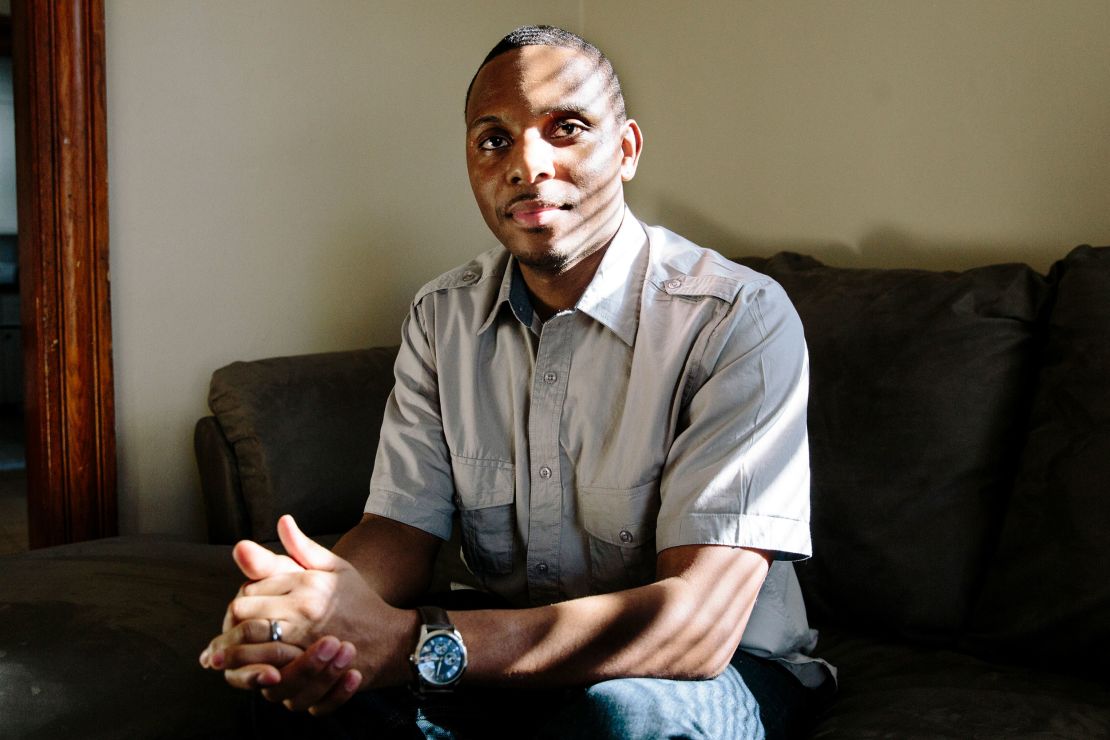
Elizer Darris, one of the Minnesota Freedom Fund’s co-executive directors, said the organization needed to be more rooted in the moment as a member of the community.
“The principles that we profess – they are enshrined within our mission statement and bylaws,” he said. “But we’re more than that. … These are our neighbors, our cousins – we see each other in a grocery store. So, it was bigger than that. And we decided that we needed to communicate differently.”
For Darris, the topic of incarceration is personal. At 16, he was tried as an adult and convicted in 2001 for the murder of a 42-year-old carnival worker who’d been bludgeoned with a car jack in northwestern Minnesota, according to news reports and court documents. Darris was among a handful of suspects arrested, though he was the only one who didn’t accept a plea deal and went to trial. While Darris has spoken publicly about the incident, he declined to comment about it for this story, saying it is not relevant to the work of the Minnesota Freedom Fund.
A year after his 2016 release, Darris told Minnesota Public Radio that he did not expect the family of the murder victim – Cornelius Rodgers – to forgive him. But he said he hopes that Rodgers’ relatives would see “the absolute effort that I have put in, and that I continue to put in, in order to make things different.”
Among his pursuits – many of which have centered on progressive causes – has been to join the Minnesota Freedom Fund.
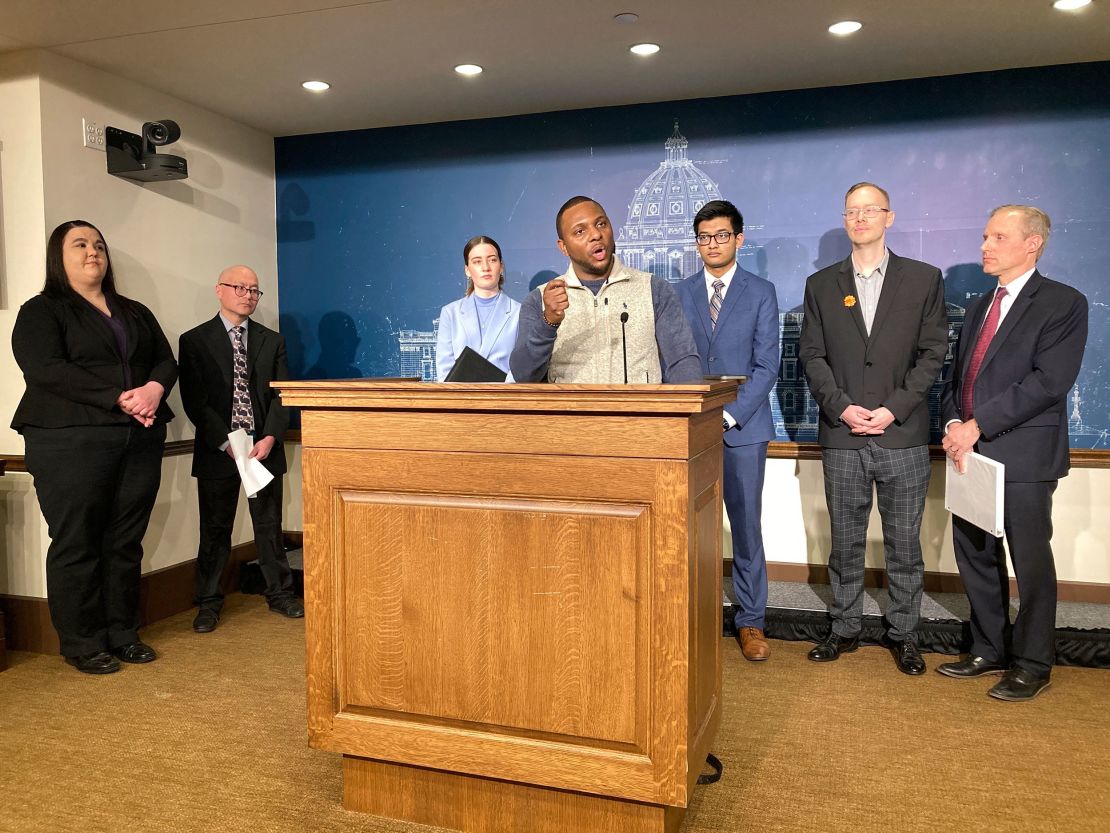
Not long after Darris’ hiring in spring 2021, the nonprofit instituted a cap on bail amounts, which tend to correlate with charge severity. The organization that year also launched a post-release program that includes access to services like housing, employment and mental healthcare.??
Darris stressed that the organization – despite its national prominence – is a community bail fund.
“We see our neighbors as neighbors. And when there’s harm, we feel it,” he said. “And we do attempt to do what we can to reduce harm.”
ADDITIONAL CNN CREDITS:
Data analysis: Casey Tolan and Annette Choi
Charts: Annette Choi
Case file graphic: Curt Merrill and Alicia Johnson
Lead illustration: Will Mullery
Photo editing: Will Lanzoni

